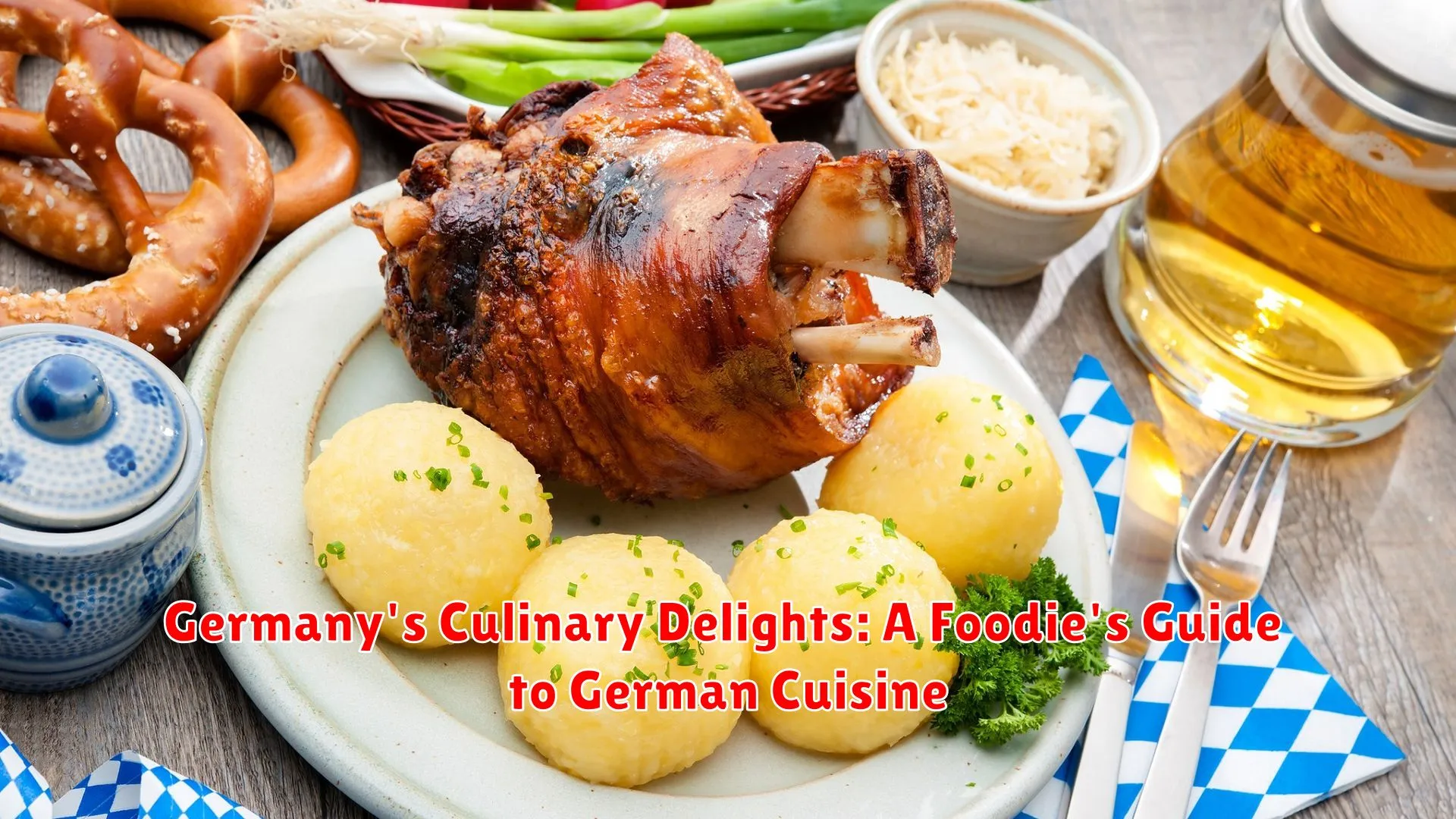Explore the rich and diverse flavors of Germany with our ultimate guide to German cuisine. From hearty sausages and savory schnitzels to decadent Black Forest cake, embark on a culinary adventure through Germany’s delightful gastronomic offerings.
Tasting Traditional German Dishes
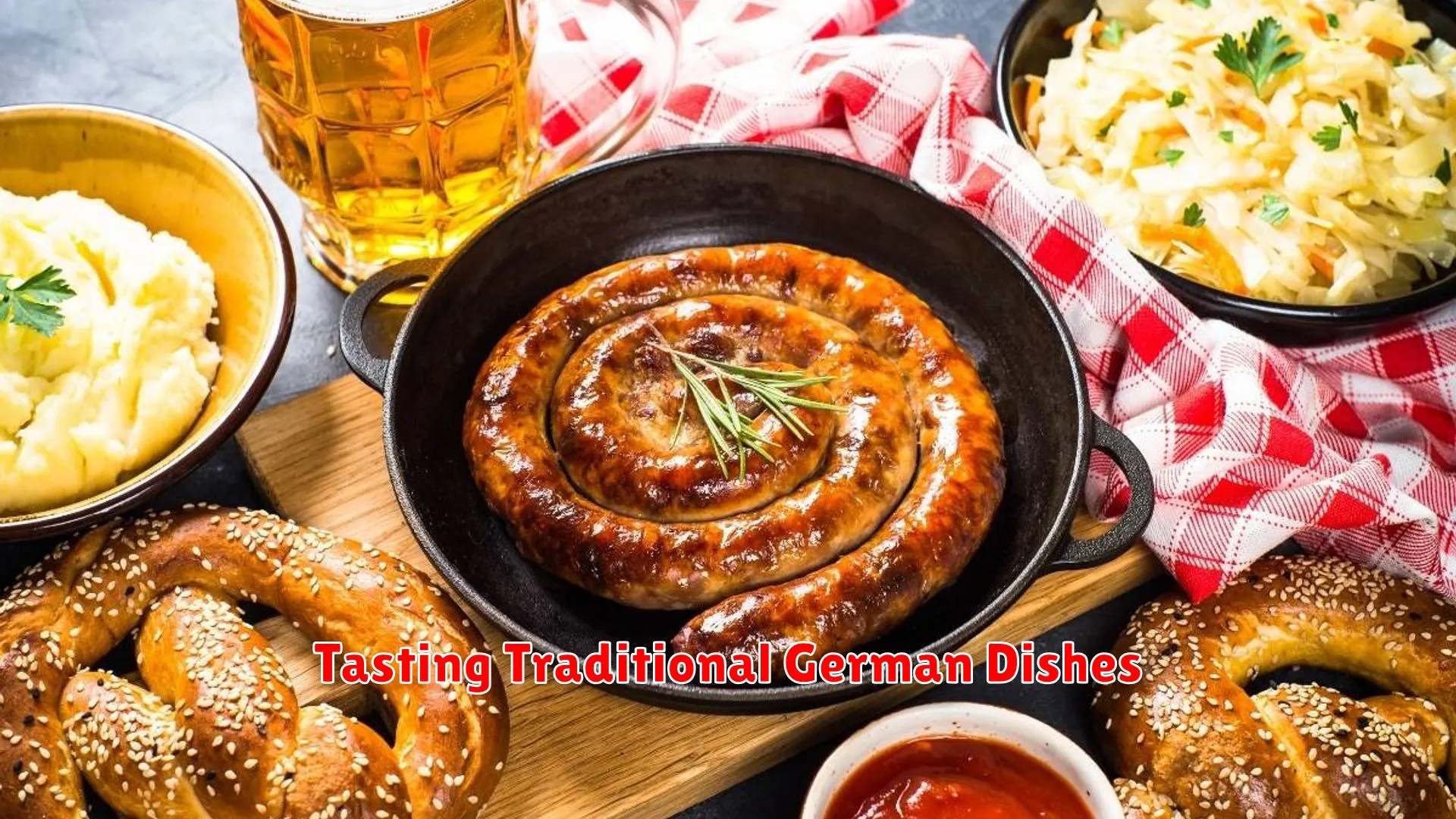
When exploring the vibrant culinary landscape of Germany, be sure to indulge in a variety of traditional dishes that capture the essence of the country’s rich gastronomy. From hearty meats to comforting stews, here are some must-try German delights:
Sauerbraten
Sauerbraten is a quintessential German pot roast marinated in a tangy-sweet vinegar-based sauce, often served with red cabbage and potato dumplings. This dish is a perfect blend of savory and sour flavors that will tantalize your taste buds.
Schnitzel
Another beloved classic is schnitzel, a thinly pounded and breaded cutlet, typically made with pork or veal. Accompanied by a squeeze of lemon, this crispy dish is a favorite among locals and visitors alike.
Currywurst
For a quick and satisfying snack, try currywurst, a popular street food consisting of sliced sausages smothered in a flavorful curry ketchup sauce. It’s the ultimate comfort food that reflects Germany’s unique culinary fusion.
Spätzle
No German meal is complete without a side of spätzle, a type of soft egg noodle that pairs perfectly with gravy or cheese. This simple yet delectable dish is a staple accompaniment to many traditional German entrees.
Black Forest Cake
Round off your culinary journey with a slice of Black Forest Cake, a decadent dessert featuring layers of chocolate cake, whipped cream, cherries, and kirsch. This iconic sweet treat is the epitome of German baking excellence.
Regional Specialties Across Germany
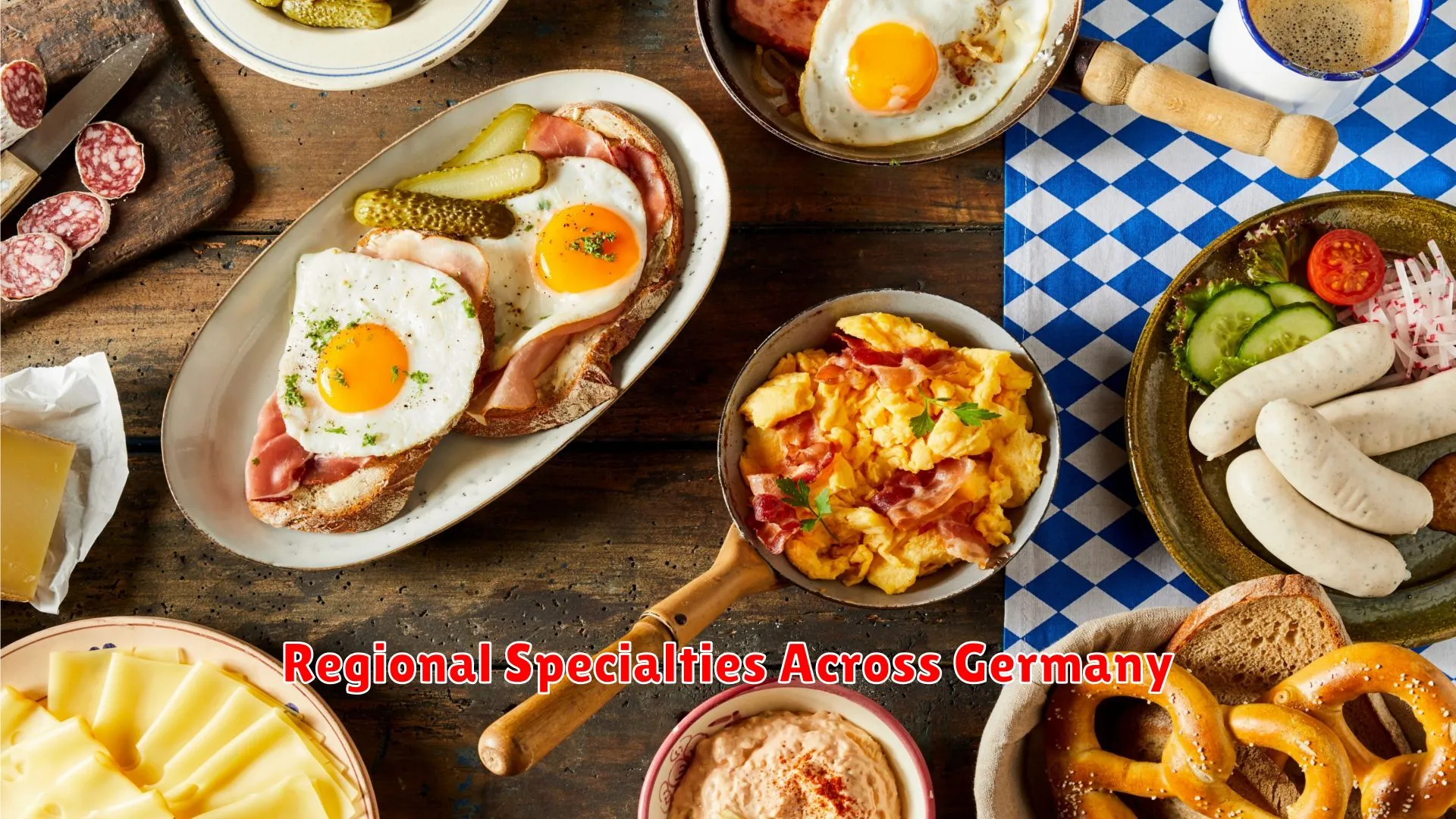
Germany is renowned for its diverse and flavorful culinary traditions that vary from region to region. Exploring Germany’s culinary delights means delving into the unique specialties that each area has to offer. Here are some must-try regional dishes when you embark on a foodie journey across Germany:
Bavaria:
In Bavaria, be sure to savor the iconic Weisswurst, a traditional white sausage made from minced veal and pork. Accompany it with a pretzel and sweet mustard for an authentic Bavarian breakfast experience. Another Bavarian favorite is Schweinshaxe, a crispy roasted pork knuckle served with sauerkraut and potato dumplings.
Black Forest:
When in the Black Forest region, indulge in a slice of Black Forest Cake. This rich dessert features layers of chocolate cake, whipped cream, cherries, and Kirsch (cherry schnapps). It’s a decadent treat that perfectly captures the essence of the region.
Thuringia:
Thuringia is known for its Thuringian Bratwurst, a savory sausage made with finely ground pork and a blend of spices. Enjoy it with mustard and fresh bread for a satisfying meal. Another specialty is Kloß, a type of potato dumpling often served with hearty meat dishes.
Rhineland:
In the Rhineland, don’t miss the chance to try Rheinischer Sauerbraten, a marinated roast beef dish typically served with red cabbage and potato dumplings. For dessert, treat yourself to a traditional Stollen, a fruit-filled bread coated with powdered sugar.
Northern Germany:
Up north, sample Fischbrötchen, a seafood sandwich typically made with fresh fish such as herring or smoked salmon. Pair it with a cold beer for a refreshing seaside snack. For something sweet, try Hamburger Franzbrötchen, a cinnamon pastry that originated in Hamburg.
Modern German Dining
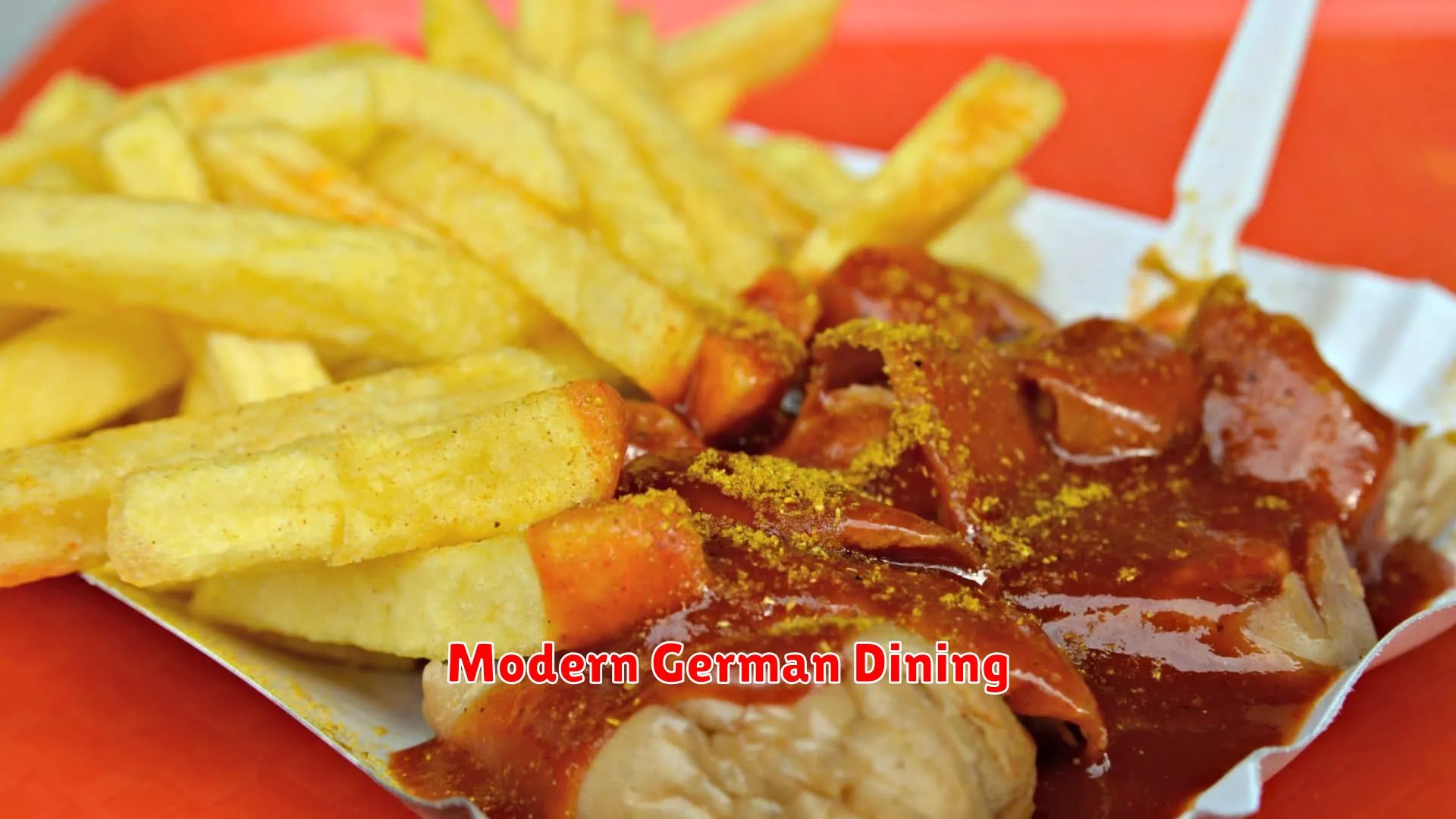
Modern German dining showcases a delightful fusion of traditional flavors with innovative culinary techniques. In recent years, German cuisine has undergone a renaissance, blending authenticity with contemporary twists to cater to the evolving tastes of food enthusiasts.
One prominent aspect of modern German dining is the emphasis on locally sourced, seasonal ingredients. Restaurants across Germany pride themselves on using fresh produce from nearby farms and markets, ensuring high-quality dishes that reflect the changing seasons.
Moreover, German chefs have been experimenting with creative presentations and unexpected flavor combinations to elevate classic dishes. From reinterpretations of traditional sausages to inventive vegetarian creations, the modern German dining scene offers a diverse range of culinary experiences.
Additionally, the rise of Michelin-starred restaurants in Germany has put the country on the map as a gourmet destination. These establishments combine precision cooking techniques with artistic plating to deliver exceptional dining experiences that celebrate both German heritage and innovation.
Overall, modern German dining encapsulates a perfect blend of culinary tradition, creativity, and a dedication to quality, making it a must-visit destination for food lovers seeking a unique and unforgettable gastronomic adventure.
Beer and Wine Culture in Germany
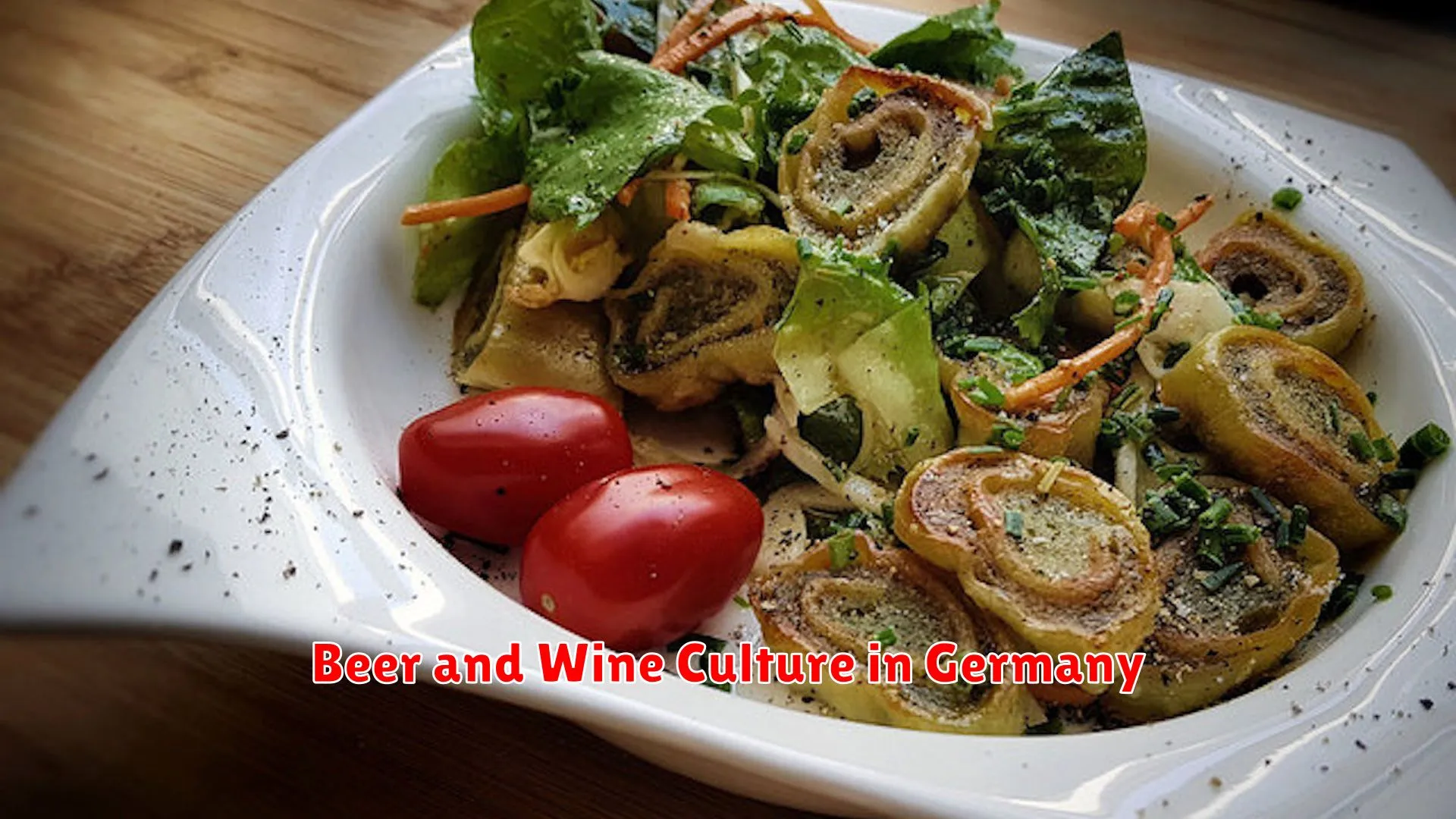
When exploring German cuisine, one cannot overlook the vibrant beer and wine culture that is deeply ingrained in the country’s culinary traditions. Germany is renowned for its beer production and consumption, with a rich history of brewing that dates back centuries. In addition to beer, Germany also boasts a thriving wine industry in regions such as the Mosel, Rheingau, and Pfalz.
Beer: Beer is a significant part of German culture, with a wide variety of beer styles to choose from. The country is famous for its Reinheitsgebot, the beer purity law that regulates the ingredients used in brewing. From refreshing lagers to robust wheat beers and flavorful pilsners, German breweries showcase a diverse range of flavors and styles for beer enthusiasts to enjoy.
Beer Festivals: Germany is home to one of the most famous beer festivals in the world, Oktoberfest, held annually in Munich. This iconic event attracts millions of visitors who come to savor traditional German beers, hearty food, and lively music in a festive atmosphere.
Wine: While beer dominates the beverage scene in Germany, the country also produces high-quality wines. The cool climate and diverse terroir create ideal conditions for grape cultivation, resulting in crisp white wines like Riesling and complex red wines like Spätburgunder (Pinot Noir).
Wine Regions: Germany’s wine regions offer stunning landscapes and picturesque vineyards where visitors can experience wine tastings and tours. The Mosel Valley, known for its steep vineyard slopes along the Mosel River, and the sunny Rheingau region are just a few of the many wine destinations worth exploring.
Conclusion
In conclusion, German cuisine offers a delightful blend of hearty flavors and rich culinary traditions that cater to every foodie’s taste buds. From the iconic bratwurst to indulgent Black Forest cake, Germany’s gastronomic offerings are a must-try for any food enthusiast.
